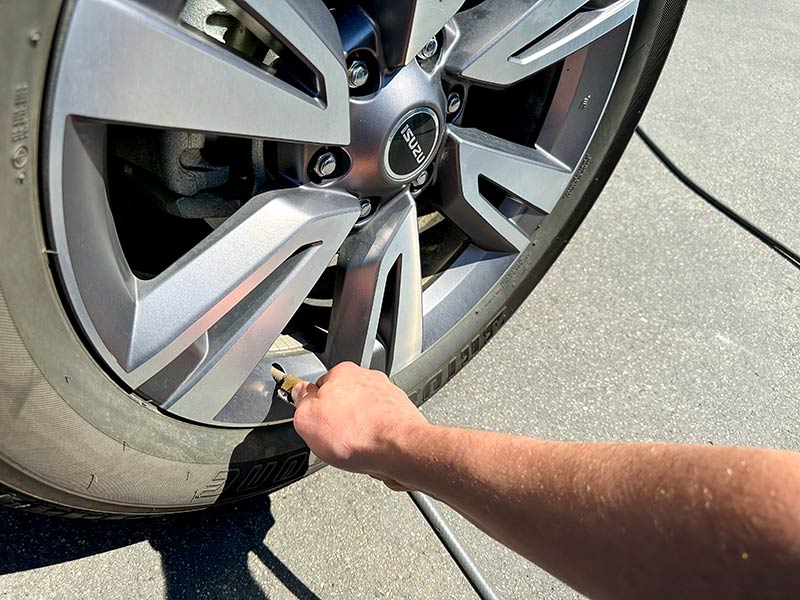Isuzu Fuel Test: Affected By Head Winds
For a few weeks, I had been pondering the results of a fuel test of our long-term test Isuzu MU-X LS-T.
In that test, which saw me travelling a couple hundred kilometres without a caravan hitched up, the vehicle consumed 8.65L/100km – a reasonable result, sure, but it was above the 8.3L/100km average claimed by Isuzu for city/country driving.
All other factors being equal, there were two possible reasons for this discrepancy. First, the weather. The first test was done during a day of strong wind gusts coming from all directions. The second reason: the car was brand new, with an engine that was arguably still running in.
However, the day after the vehicle was serviced, I had the opportunity to re-test, and I learned something interesting along the way…
SURPRISING RESULTS IN THE ISUZU
In late 2023, I drove along the Princes Highway to visit friends. Afterwards, as I was preparing to head home, I filled up the tank and noted the kilometres travelled (99.8km), having filled up and zeroed the trip-meter before departing earlier in the day. On this leg of the journey, the vehicle had consumed an average of 7.25L/100km, a massive difference over my initial figure of 8.65L/100km and Isuzu’s average of 8.3L. Having said that, this latest test involved mostly highway driving, with very little ‘around-town’ driving.

In any case, I zeroed the trip-meter again and headed home, travelling 96.7km before filling up again. The car had used 7.86L for an average of 8.13L/100km. The key difference: I was travelling into a headwind on the return journey and had the wind to my back during the first leg.
Further, with 8000km on the odometer, the 3L turbodiesel engine had been more properly run-in.
WHAT’S MY POINT?
So what’s the take-away of this ramble? First, your fuel consumption will be affected by a wide range of factors, some of them outside of your control – the weather, in particular. A strong headwind will easily add as much as 1L/100km to your fuel average. Extrapolated over 1000km, assuming a cost of $2.20 per litre, that’s $22, and $220 over 10,000km.
FUEL-EFFICIENCY TIPS
Your money is better in your bank account rather than in the already-deep pockets of BP or Shell. No doubt you have already worked out some ways to optimise your fuel consumption but some of them bear repeating:
- If possible, try to avoid travelling in horrible weather. If the engine has to work harder against the wind, you’ll know about it when you fill up again. Don’t believe me? Read this article again.
- Your general attitude at the wheel WILL affect fuel consumption. An aggressive driving posture will lighten your wallet much faster than a defensive posture.
- Check your tyre pressures. Under-inflated tyres have a greater contact patch with the road and therefore increased ‘rolling resistance’ for the engine to overcome. In my experience, the affect on fuel consumption isn’t as pronounced as wind resistance, but insuring correct tyre pressures is good practice anyway.
- Weight is the sworn enemy of fuel efficiency. Lighten your load to lighten the load on your wallet. When towing a 2700kg caravan with this same vehicle, my fuel consumption doubled. This is by no means an argument against caravanning, but it is an argument for leaving the kitchen sink at home and investing in technology such as lithium batteries, which provide the same (or greater) output for a considerable reduction in the physical weight of the battery.
The post Isuzu Fuel Test: Affected By Head Winds appeared first on GoRV.
Source: https://www.gorv.com.au/isuzu-fuel-test-affected-by-head-winds/








